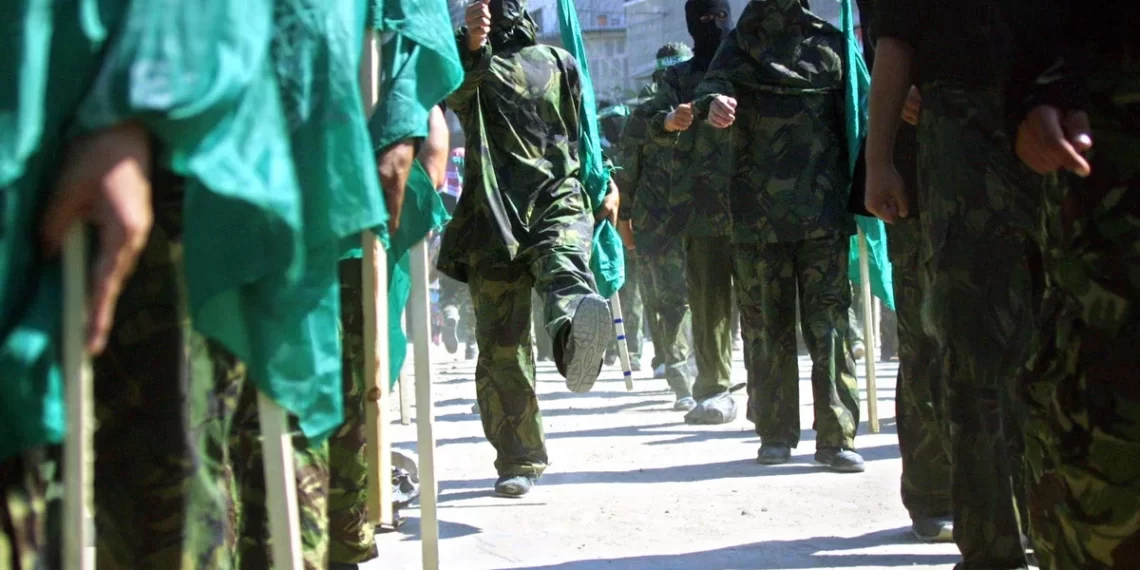Advertisement
The recent surprise attack on Israel by Hamas has once again thrust the militant group into the global spotlight. The attack, involving paragliders and bulldozers, resulted in casualties and hostages, underscoring the contentious history of the Israeli-Palestinian conflict. In this article, we will explore the origins and objectives of Hamas, the motivations behind their recent attack, their level of support among Palestinians, and the geopolitical dynamics at play in the ongoing conflict.
1. What is Hamas?
Hamas, an acronym for “Islamic Resistance Movement,” was established in 1987 during the first Palestinian uprising against Israel. It is an offshoot of the Muslim Brotherhood, a transnational Sunni Islamist group that originated in Egypt. Hamas’s core goal is to create a Palestinian state but rejects any peace agreements with Israel, which it refuses to acknowledge. Israel, the United States, and several Western countries consider Hamas a terrorist organization due to its stance on Israel.
2. Leadership and Military Wing
Hamas’s political chief is Ismail Haniyeh, based in Doha, Qatar. The U.S. State Department has designated Haniyeh as a terrorist, citing his close links to Hamas’s military wing, the Izz ad-Din al-Qassam Brigades. This military wing is currently overseen by Marwan Issa and Mohammed Deif, who are responsible for numerous attacks against Israel, including bombings and rocket attacks. Iran has been identified as a key source of funding and weapons for Hamas.
3. Presence and Popularity
Hamas has historically maintained a presence in the Gaza Strip, a small Palestinian enclave situated on the Mediterranean Sea, surrounded by Israel and Egypt. It also enjoys popularity in the West Bank. In 2006, Hamas won legislative elections in Gaza and the West Bank but opted not to form a coalition government with the Fatah party, a significant constituent of the Palestinian Liberation Organization (PLO). Subsequently, Hamas took control of the Gaza Strip.
4. Motivations Behind the Recent Attack
The recent attack by Hamas is a well-orchestrated offensive that required extensive planning. According to a senior Hamas official, Ali Barakeh, the attack aimed to respond to “Israeli crimes against the Palestinian people in Jerusalem and the West Bank” and to “break the blockade on the Gaza Strip.” It also sought to secure the release of Palestinian prisoners in Israeli jails. Conditions in the Gaza Strip have deteriorated since the blockade began in 2007, leading to high unemployment and widespread poverty.
Advertisement
5. Maintaining Relevance
Hamas’s continued opposition to Israel is deeply ingrained in its core objectives. Jonathan Panikoff, director of the Scowcroft Middle East Security Initiative at the Atlantic Council, notes that for many in Hamas, this is their reason for existence. It is also a means of maintaining relevance and preventing defections to more militant jihadist groups in the Gaza Strip.
6. Impact and Consequences
The surprise attack has not only resulted in casualties but has also inspired others in the Middle East who seek to challenge Israel. The hostages taken by Hamas during the operation are seen as a means to create bargaining leverage for the release of Palestinian prisoners in Israeli custody. This tactic has been used successfully in the past.
7. Support Among Palestinians
Following the 2021 Israeli-Gaza conflict, a poll conducted by the Palestinian Center for Policy and Survey Research showed a significant surge in support for Hamas. 53% of those surveyed believed that Hamas deserved to represent and lead the Palestinian people, in contrast to only 14% supporting Fatah.
8. Israel’s Policy Towards Hamas
Israel has maintained a complex relationship with Hamas, ranging from containment to military confrontations. In some instances, it has even acquiesced to Hamas’s control of Gaza. The most recent conflict in 2021 saw large-scale airstrikes and casualties on both sides. Some experts attribute Hamas’s emboldenment to Israeli policies in the West Bank.
9. Role of Iran
While there is disagreement among experts regarding Iran’s involvement in the recent attack, Iran has a longstanding relationship with Hamas and Hezbollah. It is known to provide support, including training and arms. The extent of Iran’s direct involvement in the planning of the attack remains a point of contention.
10. What Comes Next?
As Israel responds with retaliatory airstrikes, the situation in the region remains tense. Escalation and a lack of diplomatic solutions loom large. The future governance of Gaza and the broader Israeli-Palestinian conflict are subjects of growing concern.
In conclusion, Hamas’s recent attack on Israel highlights the ongoing complexities of the Israeli-Palestinian conflict and the deep-seated motivations of this militant group. The consequences of this attack will continue to reverberate in the region, with potential implications for future diplomatic efforts and the overall stability of the Middle East.






